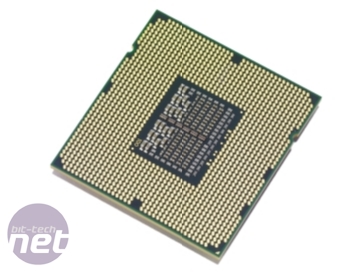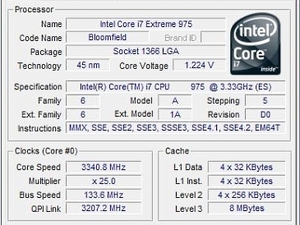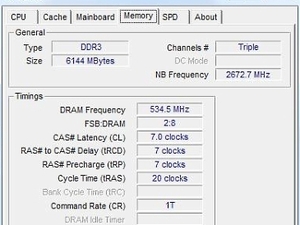Intel Core i7-975 Extreme Edition
Manufacturer: IntelUK Price (as reviewed): £775.30 (inc. VAT)
US Price (as reviewed): $1,024.99 (exc. Tax)
The more you practice doing something, the better you get, and it’s no different when it comes to making processors. After a few months, a few small glitches and bugs in a CPU’s logic usually come to light, and the engineers devise solutions. On top of these low-level design tweaks, the actual manufacturing process is usually revised to be more efficient and produce greater yields of higher-frequency CPU dies that require less voltage. The combination of all these tiny improvements is a new, more overclockable stepping of a CPU.
For Intel’s Core i7, the end result of this process is the new D0 stepping, which debuted a couple of months ago in the awesome Xeon W5580 (aka, Nehalem EP) and has now made its way to the desktop inside the all-new Core i7-975 Extreme Edition.
At 3.33GHz the 975 EE isn’t much faster than the old 3.2GHz 965 EE, and the extra speed comes from an additional level of multiplier – 25x rather than 24x – rather than an increase in QPI. As the 975 EE is a new stepping rather than a new design, it has the same cache configuration as the 965 EE: 4 x 64KB of Level 1, 4 x 256KB Level 2 and 8MB of shared Level 3.
The most noticeable difference between the two Core i7 Extreme Editions is in their power consumption. Intel states that the 965 EE has a VID range of between 0.8V and 1.375V but we’ve typically seen VIDs of around 1.3V on the chips we’ve tried.


Left, the new Intel Core i7-975 Extreme Edition looks like any other Core i7; right, the Asus P6T Deluxe motherboard, which we use to test Core i7 CPUs. Click to enlarge.
In contrast, the vid of the 975 EE we tested was a mere 1.225V, even though Intel give the same VID spread for the 975 EE. The lower VID of our test CPU explains why the 975 EE caused our test PC to consume less power than it did with the 965 EE installed. With both CPUs at stock speed, our system drew 245W when under load with the 975 EE installed and 257W with the 965 EE, as you can read on the Power Consumption page. A lower VID is also great news for overclockers as it allows more headroom for adding extra voltage for a bigger overclock, but we’ll get to that later.
We’ve included the AMD Phenom II X4 955 Black Edition in the graphs as it’s the fastest AMD CPU. However, you should remember that the 955 BE costs only £195 and isn’t a direct competitor to either of the far more expensive Intel CPUs.

MSI MPG Velox 100R Chassis Review
October 14 2021 | 15:04











Want to comment? Please log in.